China's economic miracle
1978
First economic reforms introduced by Deng Xiaoping
1980s
Special economic zones set up in five areas, where private firms allowed
1984
14 coastal cities opened up to foreign investment
1989
Shanghai stock market reopens for first time in 40 years
1997
Asian Financial Crisis
2001
China joins World Trade Organisation
2005
Private firms contribute more to Chinese economy than state-run sector
2011
China becomes world's second-biggest economy, with GDP at $7.2tn
China's rising GDP and economic miracle
The seeds of China's rapid economic growth since the 1990s were first planted back in 1978 when the Communist Party started to introduce capitalist market principles, initially in the agricultural sector.
Source: World Bank
Economic expansion accelerated dramatically in the 1990s as a result of mass privatisations, and the opening up of the country to foreign investment. Overseas firms rushed to build factories in China to take advantage of its low labour costs.
China's rising energy consumption and environmental cost
China's energy generation, 1971-2005
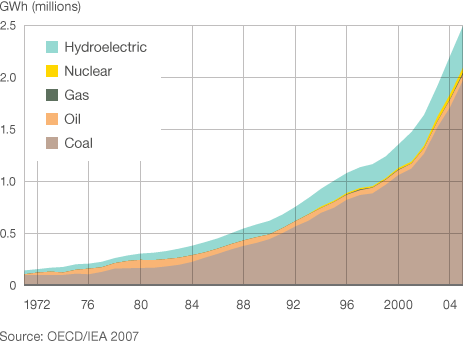
-
Economic cost to the environment (2011)
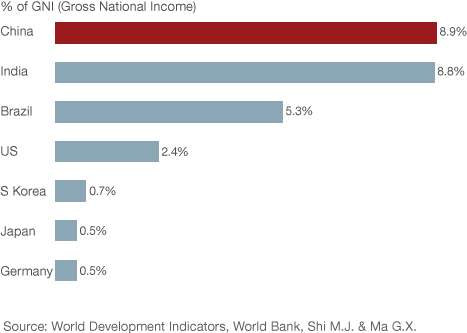 China's 8.9% of GNI = $650bn More than GNI of Austria and Portugal combined
China's 8.9% of GNI = $650bn More than GNI of Austria and Portugal combined
China's rapid economic growth has been mirrored by the big increase in its energy consumption. The country has built thousands of extra power stations to provide electricity for all the new factories and growing in cities. However, this has come with a major environmental impact, as pollution levels have soared, particularly from the country's numerous coal-fired power stations. The economic cost to the environment, shown in the graph above right, is a measure of the financial cost of pollution and the using up of finite natural resources.
China's urban population increase
Number of cities in China, Europe and US of one million people or more
![]() City of one million people or more
City of one million people or more
- China:
 34 in 2000
34 in 2000  102 in 2012
102 in 2012 221 in 2025
221 in 2025

Europe: 35 cities in 2012

US: 9 cities in 2012

-
China's megacities
 City of 10 million or more
City of 10 million or more2005

2025

Source: World Resources Institute, McKinsey Global Institute
As more and more factories have been built in China, the country has seen mass population transfer, as tens of millions of migrant workers have left the countryside to find higher paid work in the cities. This in turn has created a new domestic retail environment, with greatly increased demand for consumer products further fuelling the development and growth of urbanisation.
China's wealth increase
Annual disposable income - urban and rural households
China's high-speed economic growth has substantially increased the wealth of the country's population. This is particularly the case in cities, where factory workers' wages have risen strongly, giving them more disposable income - measured by someone's income, minus their personal taxes. While earnings in the countryside have lagged behind, people living in rural areas have still seen a marked increase in their disposable income.
Expanding car market
Vehicle sales 2007-2012
A car is a status symbol in developing countries around the world and as incomes have risen strongly, there has been a corresponding rise in car ownership in the country.
Pork consumption
Pigs slaughtered for consumption in China and US
China
US
Pork has long been the most popular meat in China, but consumption was traditionally limited by the weak spending power of most of the population. As people's incomes have risen strongly since the 1990s so the amount of pork purchased has soared.

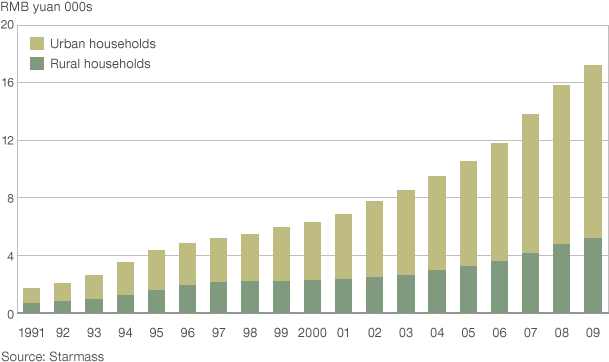
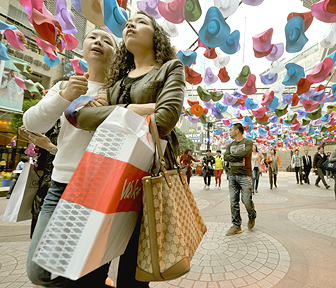

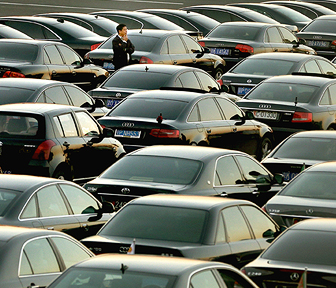
 China rejects call to free activists
China rejects call to free activists